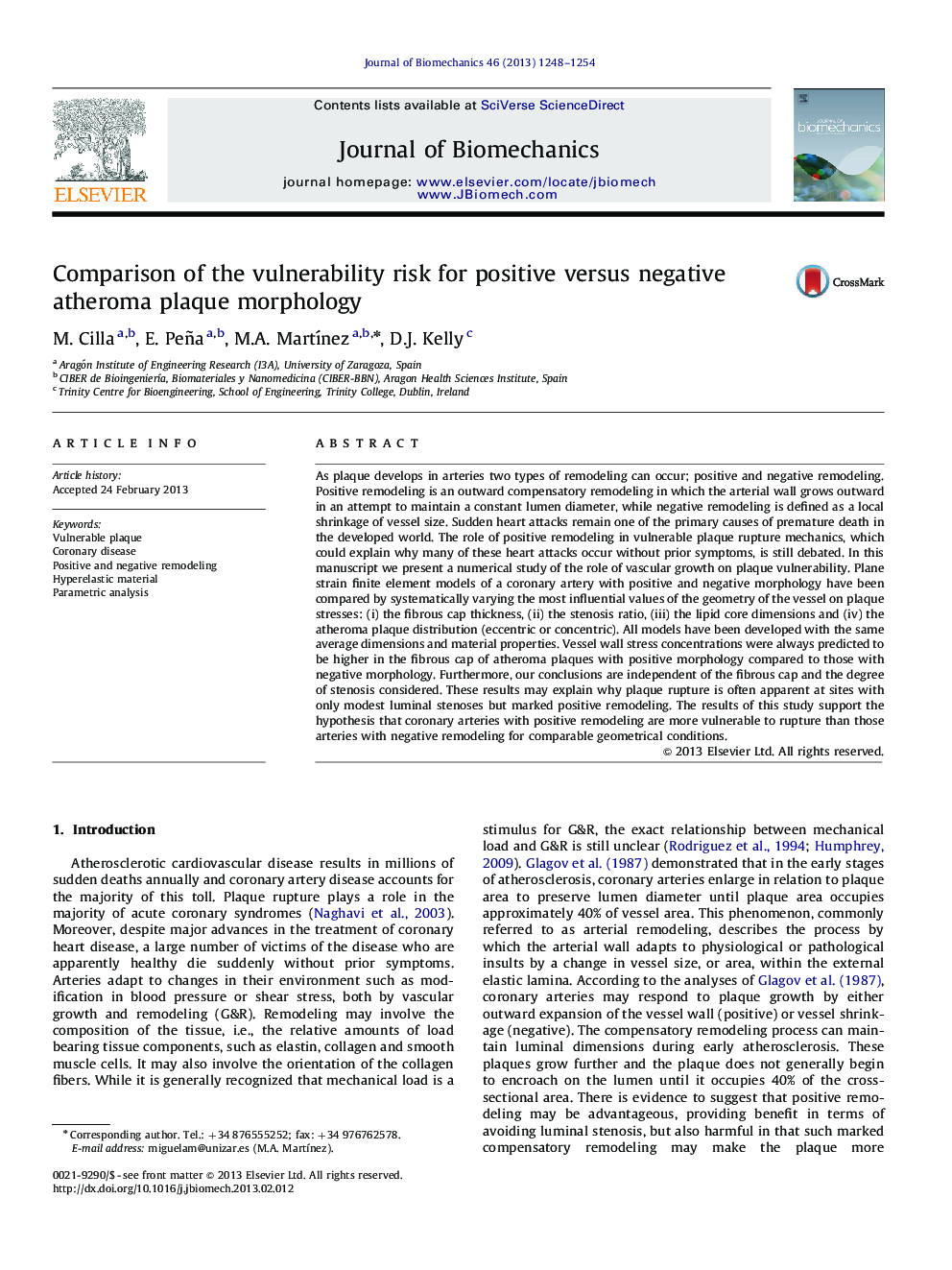| Article ID | Journal | Published Year | Pages | File Type |
|---|---|---|---|---|
| 10432608 | Journal of Biomechanics | 2013 | 7 Pages |
Abstract
As plaque develops in arteries two types of remodeling can occur; positive and negative remodeling. Positive remodeling is an outward compensatory remodeling in which the arterial wall grows outward in an attempt to maintain a constant lumen diameter, while negative remodeling is defined as a local shrinkage of vessel size. Sudden heart attacks remain one of the primary causes of premature death in the developed world. The role of positive remodeling in vulnerable plaque rupture mechanics, which could explain why many of these heart attacks occur without prior symptoms, is still debated. In this manuscript we present a numerical study of the role of vascular growth on plaque vulnerability. Plane strain finite element models of a coronary artery with positive and negative morphology have been compared by systematically varying the most influential values of the geometry of the vessel on plaque stresses: (i) the fibrous cap thickness, (ii) the stenosis ratio, (iii) the lipid core dimensions and (iv) the atheroma plaque distribution (eccentric or concentric). All models have been developed with the same average dimensions and material properties. Vessel wall stress concentrations were always predicted to be higher in the fibrous cap of atheroma plaques with positive morphology compared to those with negative morphology. Furthermore, our conclusions are independent of the fibrous cap and the degree of stenosis considered. These results may explain why plaque rupture is often apparent at sites with only modest luminal stenoses but marked positive remodeling. The results of this study support the hypothesis that coronary arteries with positive remodeling are more vulnerable to rupture than those arteries with negative remodeling for comparable geometrical conditions.
Related Topics
Physical Sciences and Engineering
Engineering
Biomedical Engineering
Authors
M. Cilla, E. Peña, M.A. MartÃnez, D.J. Kelly,
